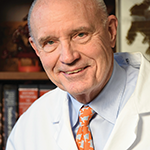Other facets of his education also foretold some of his future directions. He maintains that at Johns Hopkins, where he majored in both philosophy and chemistry, “I was quite awful and clueless in the laboratory, but loved the conceptualization and orderly thinking of putting ideas together and making sense of things.” A summer in the lab of Paul Talalay, MD, professor of pharmacology and molecular sciences at Johns Hopkins, was also pivotal. “After chewing me out for letting the automated amino acid analyzer run dry, Talalay said, ‘Genius is the infinite ability to take pains.’ That stuck forever!” Dr. Liang says.
Community and population health techniques were acquired while he pursued a degree in tropical public health and epidemiology at the Harvard School of Public Health. That work continued when, as a senior medical resident, he started an inner-city neighborhood health center at Boston City Hospital and worked with Roger Mark, MD, using nurse practitioners and telemedicine to care for nursing home residents. His work in this area expanded during his years in the Army, when he led the dissemination of an algorithm-based physician extender program (AMOSIST), which delivered care to 30,000 patients a month.
At this point, recalls Dr. Liang, he began to think about fellowship training and applied in infectious disease, nephrology, cardiology—and to only one rheumatology program. But it was the one he chose that most markedly influenced his path as a physician-activist. He became a rheumatology fellow and a Robert Wood Johnson Clinical Scholar at Stanford University, a hotbed of clinical informatics, health services research, and new models of population health, where he worked with James Fries, MD, professor of medicine there, and Dr. Holman. From Dr. Holman he “experienced true scholarship, grace, and dignity, and [learned] that generosity is power,” Dr. Liang says. He was recruited out of fellowship to Harvard.
Seismic Shifts
Dr. Liang’s focus on the human experience of medical conditions has, over the span of his career, led to contributions in a variety of scientific areas, sometimes undermining the conventional view. For example, a large-scale, randomized, controlled trial of a popular back school program designed to prevent low back injury among postal workers found no benefits associated with the training.1 A study using Harvard’s Nurses’ Health Study cohort found no association between silicone breast implants and connective-tissue diseases and threw him and his colleagues into the media spotlight.2 Breast implant plaintiffs’ attorneys subpoenaed Dr. Liang’s grants and research records to undermine the findings, which were later substantiated.
